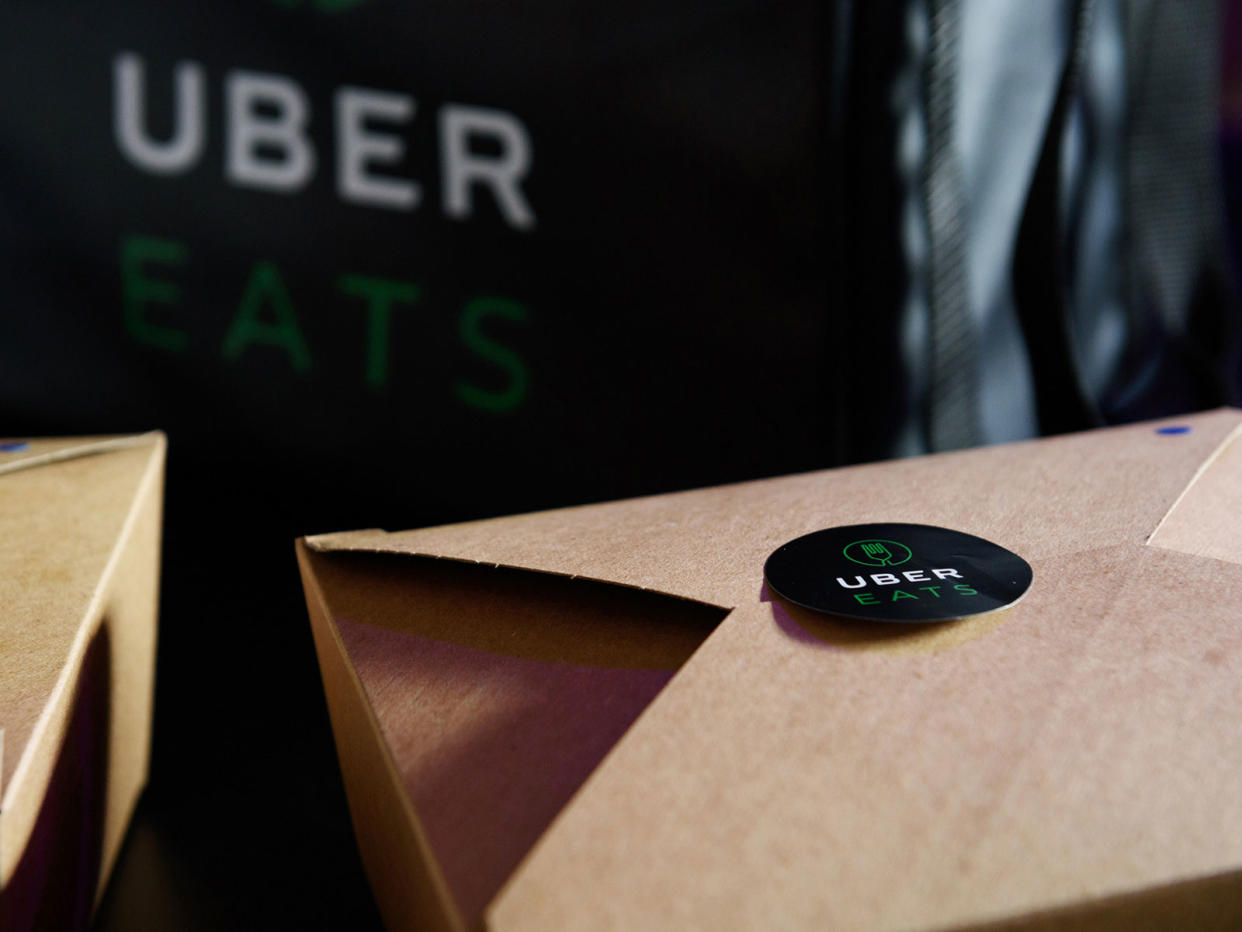Uber has 'major advantage' with food delivery: analyst

Uber is doubling down on UberEats, its four-year-old restaurant meal-delivery service, and that’s a logical move for the popular ride-sharing business which has a “major advantage” in that area, says one analyst.
“Uber already has the advantage of their own delivery fleet as part of the rest of their business to rely upon, which most other food delivery businesses don’t have,” explains Natan Reddy, an analyst for CB Insights. “That’s a major advantage in my opinion, and it will be interesting to see how that shakes out against as competitors expand abroad.”
Rivals such as Grubhub (GRUB), DoorDash and Caviar must build out their own infrastructure of contracted drivers to pick up and deliver orders, but UberEats operates by employing the very same Uber drivers who give passengers a ride. That strategy of “piggybacking” upon Uber’s pre-existing network of drivers has apparently been a smart one.
Indeed, UberEats has plans to expand to 100 new cities in Europe, the Middle East and Africa, in addition to the 250 or so cities it currently operates in around the globe.
Over the past 12 months, the food delivery service has been an asset for Uber, which took a beating over controversies that included allegations of sexual harassment in its work culture. According to The New York Times, the number of trips by UberEats drivers grew more than 24 times between March 2016 and March 2017. Meanwhile, Uber has said UberEats is profitable in at least 25 of the markets it’s available in and generated $1.1 billion, or 10%, of the company’s fourth-quarter 2017 revenues.
Food delivery in general is a notoriously low-margin business, largely contingent upon fees added onto a meal order. For example, in the case of UberEats, it delivers from nearly 7,000 McDonald’s locations in 20 different countries — or about 9% of all outlets on the platform — for a $5 fee. While that’s relatively expensive to get chicken nuggets and french fries delivered to your door, McDonald’s, for its part, said the partnership with UberEats is working, with an average of more than 10-plus UberEats orders per day. (Indeed, some locations are apparently receiving over 100-plus orders a day.)
Still, that $5 UberEats fee gets divvied up, with a small portion of that being paid out to the UberEats driver. And that’s very much the same case for other competitors, too, although the exact pricing and economics varies from service to service.
“Consumers are extremely sensitive to the price that you charge, and a lot of these services are sort of caught between a rock and a hard place where you pay the people that are delivering the food, but you can’t charge too high a price to the customers because they won’t buy the food to begin with,” Reddy explains.
Food delivery is a tough business
Those economics are very likely why venture capitalists are less enthused these days about backing food delivery startups. According to CB Insights, 87 food delivery startups raised $2.6 billion in venture-backed capital in 2017 — significantly less than the 137 startups that raised $4.2 billion in venture-backed capital in 2015. Reddy says that indicates not only that VCs are less inclined to invest in the space overall, but also that there are fewer new businesses sprouting up vying to deliver meals to your door.
Companies like Postmates, for instance, try tackling the challenging economics of food delivery by offering different pricing schemes. Its subscription-based feature, Postmates Unlimited, lets users place as many orders as they want with restaurants without having to pay an added fee per order, provided they pay $9.99 a month or $83.99 a year. That’s in part because Postmates has raised over $278 million in venture capital-backed funding, but also because the company is available in 50 markets and has reached a national scale, effectively building a competitive moat against competitors.
“The overall pattern we’re seeing in meal delivery is that the companies that are able to operate in the long run are the ones that reach scale, and if you don’t have that scale, it just becomes extremely difficult to operate the logistics necessary to offer that service and operate that type of business,” explains Reddy. “If you don’t reach that level of scale, I think it’s difficult to guard your unit economics.”
—
JP Mangalindan is the Chief Tech Correspondent for Yahoo Finance covering the intersection of tech and business. Email story tips and musings to jpm@oath.com. Follow him on Twitter or Facebook.
More from JP:
Employee parking is ‘impossible’ to find at Facebook’s campus
Facebook’s ‘Downvote’ is the closest we’ll ever get to a Dislike button
African American and Hispanic tech workers still earn less than their white counterparts
Follow Yahoo Finance on Facebook, Twitter, Instagram, and LinkedIn


